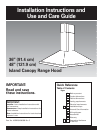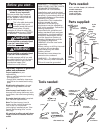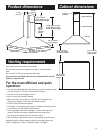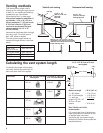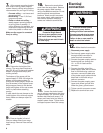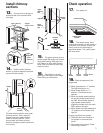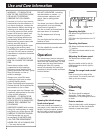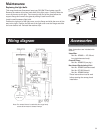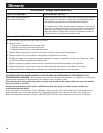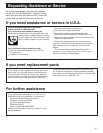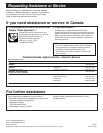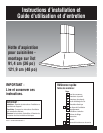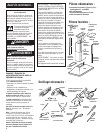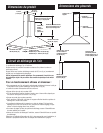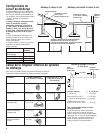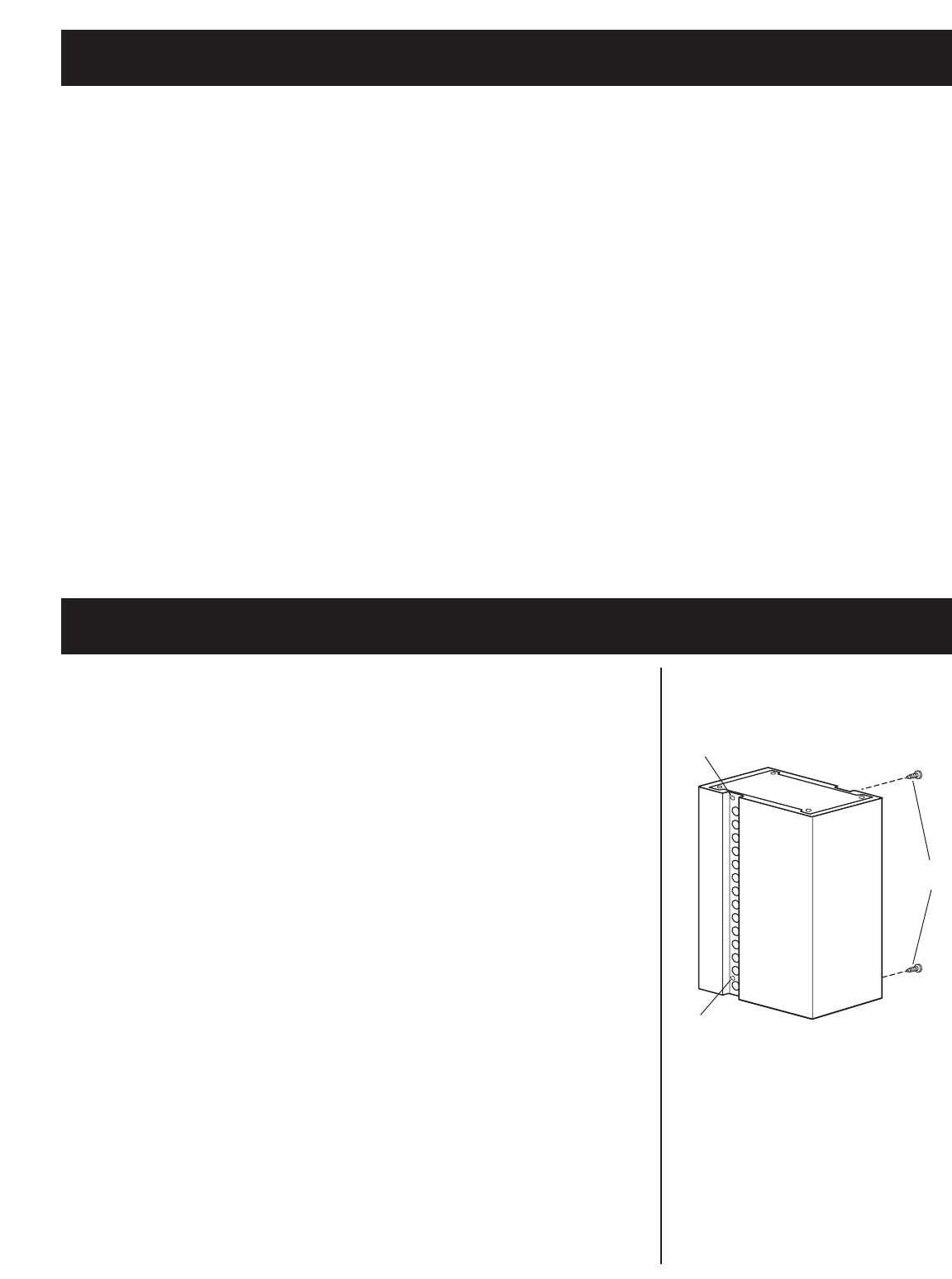
5
Electrical requirements
Installation steps
Important: Observe all governing
codes and ordinances.
It is the customer’s responsibility:
•To contact a qualified electrical
installer.
•To assure that the electrical
installation is adequate and in
conformance with National
Electrical Code, ANSI/NFPA 70
— latest edition*, or CSA
Standards C22.1-94, Canadian
Electrical Code, Part 1 and
C22.2 No.0-M91 - latest
edition** and all local codes
and ordinances.
If codes permit and a separate
ground wire is used, it is
recommended that a qualified
electrician determine that the
ground path is adequate.
A 120-volt, 60 Hz, AC-only, fused
electrical supply is required on a
The range hood must be
connected with copper wire only.
The range hood should be
connected directly to the fused
disconnect (or circuit breaker) box
through flexible armored or
nonmetallic sheathed copper cable. A
U.L.- or C.S.A.- listed strain relief must
be provided at each end of the power
separate 15-amp circuit, fused on
both sides of the line.
Do not ground to a gas pipe.
Check with a qualified electrician
if you are not sure range hood is
properly grounded.
Do not have a fuse in the neutral
or ground circuit.
IMPORTANT:
Save Installation Instructions for
electrical inspector’s use.
supply cable. Wire sizes (COPPER
WIRE ONLY) and connections must
conform with the rating of the
appliance as specified on the
model/serial rating plate.
Wire sizes must conform to the
requirements of the National Electrical
Code ANSI/NFPA 70 — latest edition*,
or CSA Standards C22.1-94, Canadian
Electrical Code Part 1 and C22.2 No.
0-M91 - latest edition** and all local
codes and ordinances.
A U.L.- or C.S.A.- listed conduit
connector must be provided at each
end of the power supply cable (at the
range hood and at the junction box).
Copies of the standards listed may be
obtained from:
* National Fire Protection Association
Batterymarch Park
Quincy, Massachusetts 02269
** CSA International
8501 East Pleasant Valley Road
Cleveland, Ohio 44131-5575
Because of the size and weight of this
island canopy hood, the support sys-
tem must be securely attached to the
ceiling.
— For plaster or sheet rock ceilings,
the support must be attached to
joists.
— If this is not possible, you must
build a support structure behind
the plaster or sheet rock.
Do Not cut a joist or stud unless
absolutely necessary. If a joist or stud
must be cut, then a supporting frame
must be constructed.
Before making cutouts, make sure
there is proper clearance within the
ceiling or wall for exhaust vent.
1. Put a thick, protective covering
over countertop, cooktop or range to
protect from damage or dirt. Select a
flat surface for assembling the unit.
Cover that surface with a protective
covering and place all hood parts and
hardware on it.
Preparation Installation
2. Determine and mark the
centerline on the ceiling where the
range hood will be installed.
3. Using the mounting template,
mark the location of the support
mounting bracket holes, vent cutout
(if used) and power supply cable
cutout on the ceiling. Use 1-1/4"
(3.2 cm) drill and saber saw or
keyhole saw to cut openings for
power supply cable and vent. (See
“Venting requirements” and
“Electrical requirements,” Pages 3-5.
4. If venting to the outside install
vent system. (See “Venting
requirements”, Page 3.) Use caulking
to seal exterior wall or roof openings.
5. Run wiring through ceiling
according to the National Electrical
Code or CSA Standards and local
codes and ordinances. There must be
enough power supply cable from the
fused disconnect (or circuit breaker)
box the to make the connections in
the hood‘s terminal box.
Do Not turn on power until
installation is completed.
Use caulking to seal all openings.
screws
screw
screw
upper
chimney
6. Remove the four screws on the
upper chimney and disassemble
chimney pieces from support frame.



